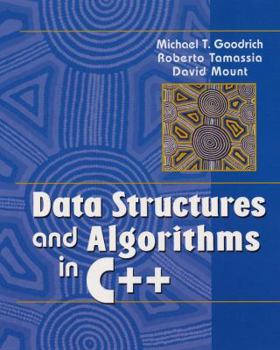Data Structures and Algorithms in C++
* Provides a comprehensive introduction to data structures and algorithms, including their design, analysis, and implementation * Each data structure is presented using ADTs and their respective implementations * Helps provide an understanding of the wide spectrum of skills ranging from sound algorithm and data structure design to efficient implementation and coding of these designs in C++ Wiley Higher Education
Format:Paperback
Language:English
ISBN:0471202088
ISBN13:9780471202080
Release Date:February 2003
Publisher:Wiley
Length:704 Pages
Weight:2.87 lbs.
Dimensions:1.2" x 7.6" x 9.7"
Customer Reviews
1 customer rating | 1 review
There are currently no reviews. Be the first to review this work.





















